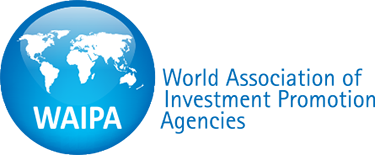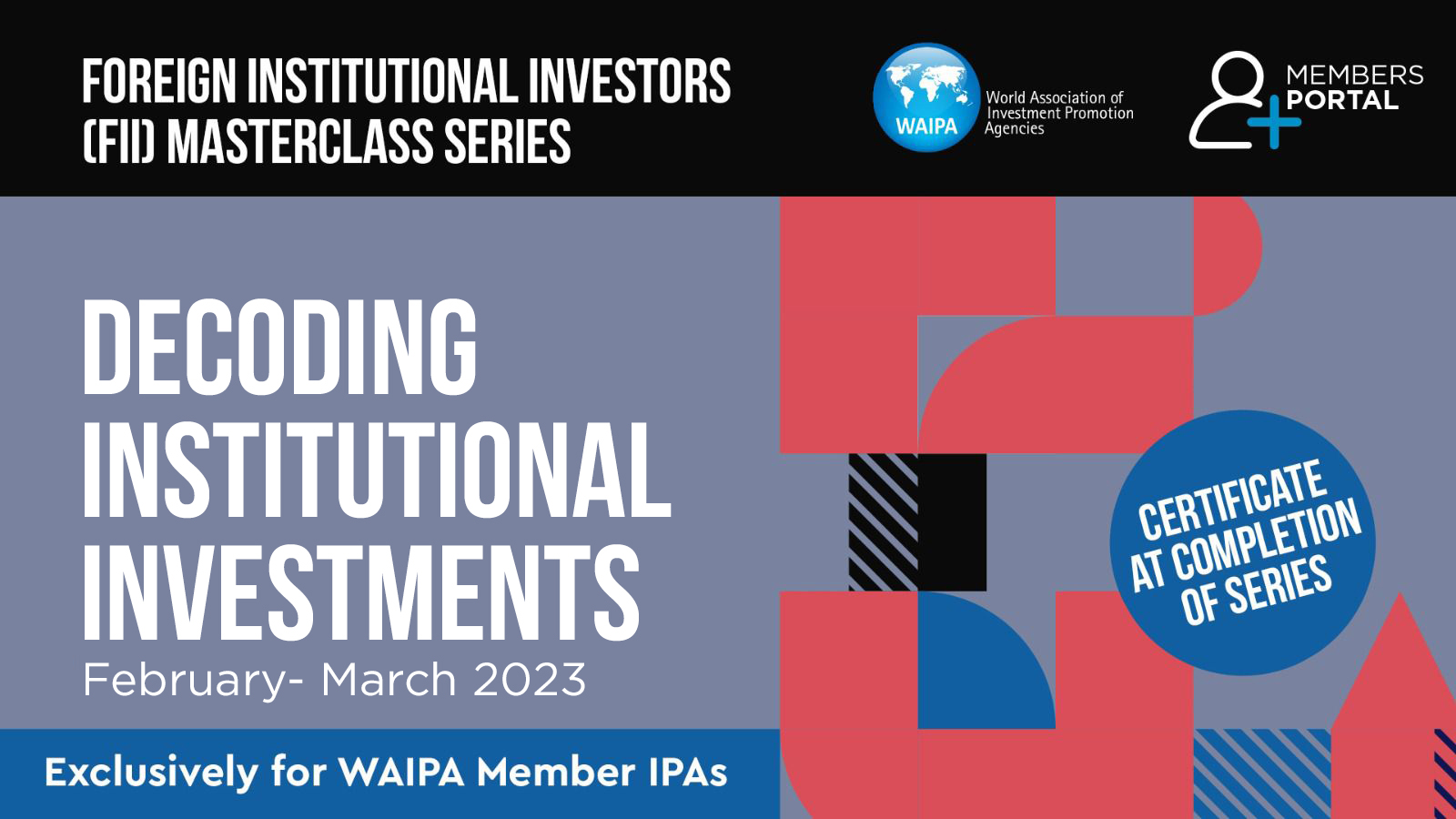WAIPA organized an exclusive 3-part masterclass series for its members on the theme of “Decoding Institutional Investors” from the end of February to mid-March held on WAIPA’s Members Portal.
Given the sheer volume of institutional investors and their increasing global investments, the masterclass has been conceptualized to make IPA members aware of such a key actor in the investment regime and how they can successfully attempt to engage with them.
The 1st webinar focusing on “Demystifying Institutional Investors” was held on the 28th of February. The first session was devoted to forming a foundational knowledge of the institutional investors and their strategies among the participants.
It was highlighted that total global assets under management are worth approximately $120 trillion. The assets favoured by institutional investors directly (e.g. through Sovereign Wealth Fund) or indirectly (eg. Asset management companies) were discussed in the workshop. Fixed incomes continue to be the most preferred asset for investment across the globe over the years. Furthermore, the rise of infrastructure as a potential asset over recent years was highlighted. Case studies of state-owned enterprises, as well as private investment firms, helped participants gain a comprehensive understanding of the objectives of such organizations to pursue strategic investments more so the kind of assets they target.
Session 2 on “Creating Right Opportunities” for institutional investors was organized on 9th March. It highlighted the novel investment models developed- primarily on a PPP framework- in the infrastructure sector in India which saw participation from institutional investors. Project details were established keeping in mind the risk-taking ability of the investors and therefore necessary safeguards and incentives were provided tosuccessfully attract the institutional investor.
The last session “Attracting Institutional Capital” was held on15th March. It focused on the emerging sub-fields within the infrastructure sector- such as data infrastructure- that are being increasingly popular among institutional investors. The session also showcased how the government and its agencies can support the development of infrastructure-related projects via their policies aimed at the debt market. Finally, India’s engagement with the institutional investors was discussed which aided the participants in learning the relevant best practices.
Overall, representatives from 30 member countries actively participated in this masterclass series thereby gainingsubstantial information on this critical category of investors and how to effectively engage with them.


